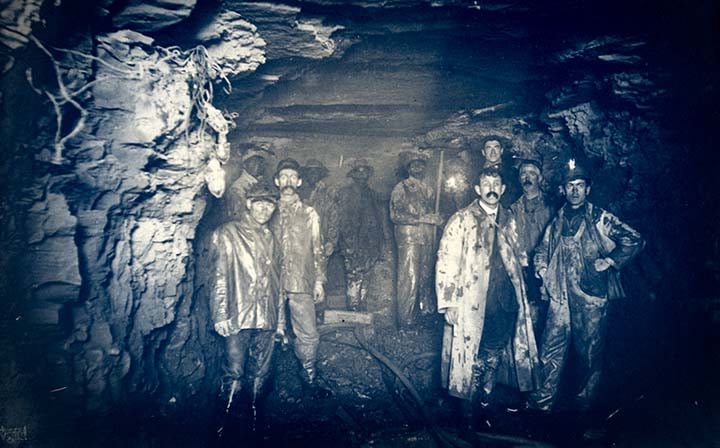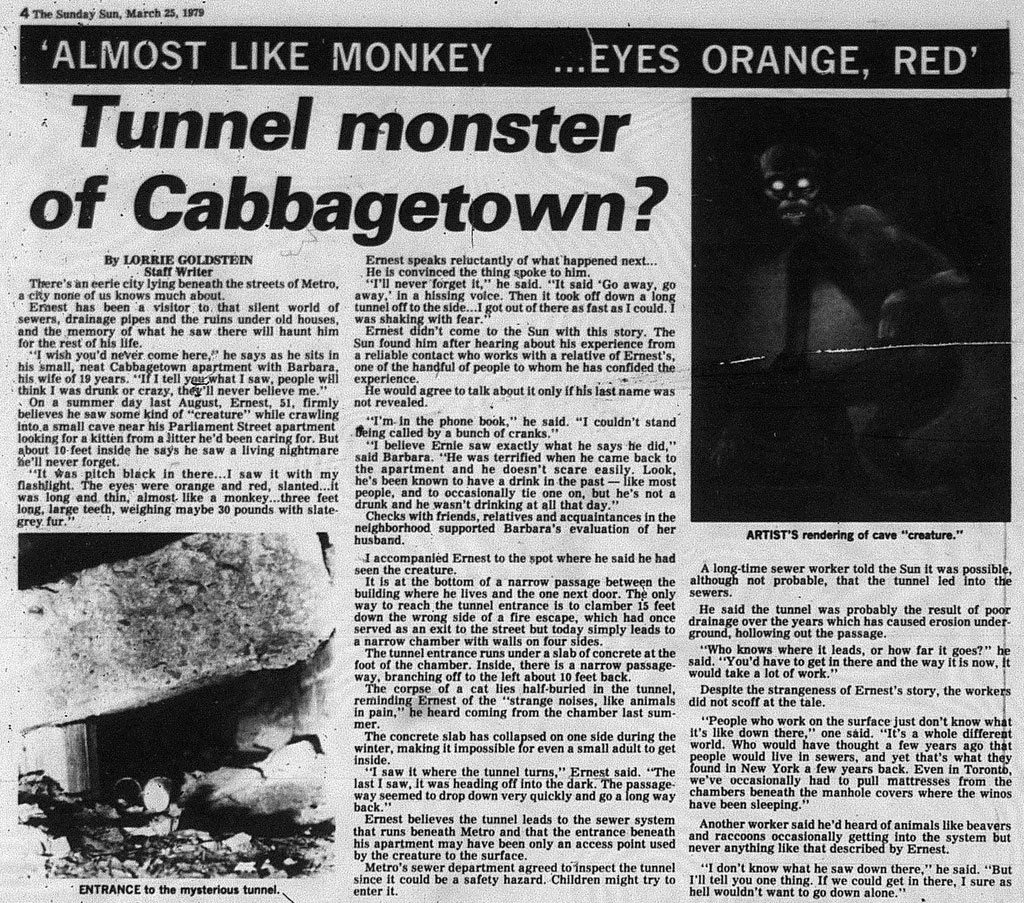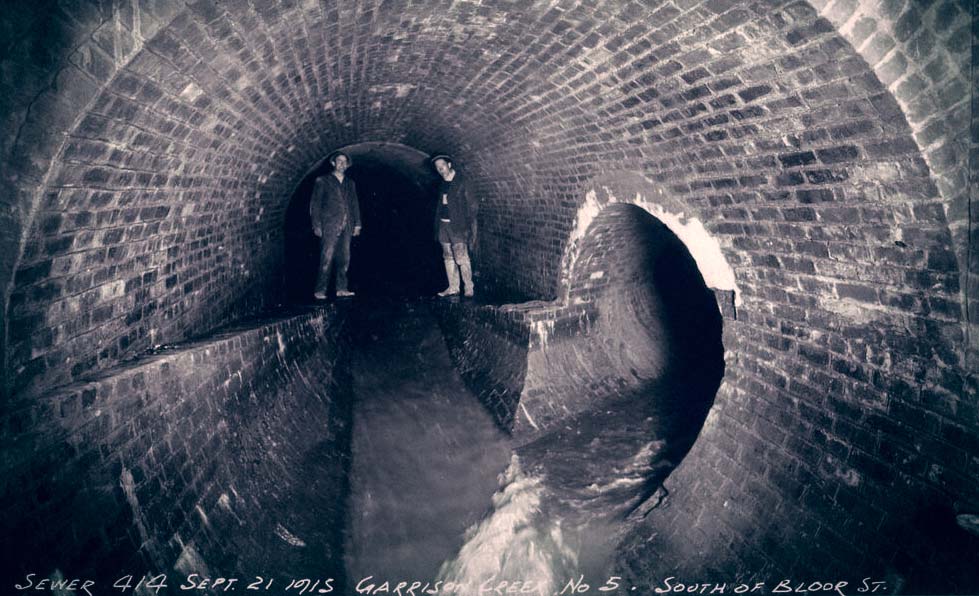
Countless horror movies have taken place underground, fuelling many people’s nightmares of being trapped below the surface unable to reach daylight. There is something about the dark and tight passageways far from the open sky that simultaneously intrigues and horrifies us. Even for people living in the city, the draw of the underground inspires countless urban mystery seekers who want to unravel the secrets of these mysterious caverns.
Hidden beneath the feet of the nearly six million people who live in the greater Toronto area is a series of secret tunnels. They provide passage for original streams and waterways, they house the looping subway systems, they provide covered passageways between buildings, and they carve out space for the countless sewer lines and pipes running under the city streets. Most people are unaware of the vast network of tunnels and very few have seen it inside. Let’s take a dive underground and explore the secret tunnels under modern-day Toronto and explore stories of unworldly creatures potentially lurking in the darkness.
Pre-Urban Toronto
When some of the first European settlers began establishing a city at the site of contemporary Toronto in the early 19th century, they would have encountered a place very different from what we know today. There were no towering skyscrapers or paved roads, and most buildings were constructed out of wood. The shoreline at that time ran along contemporary Front Street – most of the land south of this road would be gradually filled in with landfill over the years as the city rapidly expanded. A series of streams and small rivers cut from Lake Ontario and carved through the small settlement. To help people and supplies move over the waterways, numerous small bridges and makeshift crossing systems were built. But the small city with its network of streams and marshes was congested, dirty, and filled with disease.
(Image by lostrivers.ca)

The Making of the Tunnel System

By the first decades of the 19th century, there were already plans to overcome these nuisances by building over the networks of streams and rivers. This strategy would rid the city of putrid stagnant water that was often filled with waste and would also free up more land for building. Similar practices of filling in small urban waterways was happening around the world as the industrial revolution demanded more urban spaces uninhibited by nature. So, the streams and rivers that had been part of the landscape for countless generations was built over. Although most of the waterways continued to run, it was all underground and away from the urban progress happening above.
Soon, other types of tunnels joined the growing network of built underground caverns. Better knowledge of water-born disease and the need for urban hygiene prompted the burying of sewer and sanitation systems. By the end of the 19th century, more human waste was being directed underground to avoid rivers of waste running through the streets. As more large institutions were built over multiple blocks, tunnels were also dug to discreetly connect building complexes, protect occupants from the elements, and avoid adding to Toronto’s growing traffic problems. Eventually, subway tunnels would join the network of underground spaces, along with the popular PATH system that allows people to travel throughout the downtown core without ever stepping outside.
While some tunnels are open to the public, most are closed off to everyone except the occasional maintenance worker or curiosity-seeker. However, there is some speculation that something or someone is lurking deep in the underground system, largely left alone as the city continues to grow around it. Many stories have circulated over the years, usually passed on as an urban legend whisper or a terrifying story told around a campfire. But one terrifying encounter has remained stuck in everyone’s minds.
Ernest’s Encounter
In March 1979 a man named Ernest approached a Toronto newspaper with a terrifying tale. He was terrified about his experience but also embarrassed about it, so he opted to use only his first name. The previous year, he claimed to have had a terrifying encounter near his Parliament Street apartment and he felt compelled to tell other Torontonians about what was living under their streets. The being eventually became known as the Cabbagetown tunnel monster.
According to Ernest, he was caring for some feral kittens near his home. After one of them had seemingly gone missing, he went looking for it and eventually found himself inside one of the secret underground tunnels. Through the darkness, with a small flashlight as his only guide, he stumbled upon a small creature. He described it as thin with long legs, almost like a monkey, and about the size of a child. It had piercing and slanted eyes that glowed a terrifying blood red. The creature turned towards him in the darkness and hissed at him to get out. Ernest obliged and quickly ran out of the tunnel.
The telling of the story seemed authentic and Ernest was fully convinced of what he had seen. He was sure that this creature lived in the secret tunnel system. Some speculated that this encounter could be connected to aliens and a few even purported that Toronto was built on some kind of alien encampment. Others were sure it was a humanoid monster, like an urban bigfoot, living amongst the rats and other feral creatures of the tunnel systems. A few people were sure that Ernest simply saw an urban animal and, in the darkness and uncertainty of the tunnels, he was simply confused. However, as his story has been retold over the years, others have pointed to a much older explanation.

Memegwesi

Since time immemorial, the Ojibwe peoples lived in what is now known as Canada. They travelled throughout what is now known as Ontario, including around the Great Lakes where Toronto is today. The Ojibwe tell the story of the memegwesi, a type of water spirit that is often found at the banks of water ways. The spirit is usually described as a small human-like figure who is often pulling pranks on unsuspecting humans. Depending on the circumstance, memegwesi can be either a spirit of good or bad fortune.
Given that many of Toronto’s secret tunnels were once rivers and streams running overland, some have since speculated that Ernest may have encountered a water spirit. His description of the height, eyes and fur of the creature match many descriptions of memegwesi. However, the creature’s hostility towards Ernest is a little less characteristic of the generally cheeky spirit.
(Sketch of creature based on artist’s rendition.)
Prehistoric Footprints

The unexplained presence of skinny hairy monsters aren’t the only thing that have been found in the tunnels under Toronto. In 1908, construction workers building a tunnel in the Toronto harbour may have discovered a priceless archaeological artifact – perhaps the earliest record of human presence around Lake Ontario created thousands and thousands of years before. The workers discovered a slab of ancient clay that had seemingly recorded the feet of humans walking close to the harbour. A hastily made sketch was created and published in the newspaper, but the original slab was unfortunately discarded. The workers were preoccupied with digging the tunnel on a tight deadline and many people at the time didn’t consider the importance of this artifact.
It’s likely that there are still countless artifacts hidden in the Toronto secret tunnels to this day. It’s well known that many urban adventurers go into the tunnels every year to scour the underground network for anything interesting. Their experiences are largely unrecorded, as their quests are technically illegal. However, it’s very likely that adventure seekers are coming across the unknown all the time in these secret passageways. Perhaps they are finding evidence of ancient human activity in the area, or maybe they’re having unexplained encounters with the monkey-like creature that Ernest saw over forty years ago. The only certainty is that Toronto’s tunnel system continues to hold compelling secrets right beneath the feet of millions of residents who pass over these hidden caverns every single day.
Written by:
Brittney Anne Bos, PhD
Haunted Walk Tour Guide & Host
Sources:
https://torontoist.com/2013/02/toronto-urban-legends-the-real-toronto-underground/
https://cryptidz.fandom.com/wiki/Toronto_Tunnel_Monster
https://www.bekahferguson.com/the-tunnel-monster-of-cabbagetown-ontario-1978/
https://curiocity.com/under-this-canadian-city-a-network-of-secret-underground-tunnels-awaits/
https://www.heritagetoronto.org/explore-learn/toronto-tunnels-mystery-history/
https://fichtenstein.wordpress.com/2018/08/24/horror-movies-caves-and-tunnels-are-creepy/
http://lostrivers.ca/content/centralkey.html
https://theculturetrip.com/north-america/canada/articles/path-toronto-s-underground-walkway/
https://www.thestar.com/news/gta/2015/02/27/tunnels-a-short-guide-to-torontos-nether-regions.html
https://www.dibaajimowin.com/myths/little-people
http://www.native-languages.org/memegwesi.htm
https://www.thestar.com/news/insight/2008/11/23/the_enigma_of_lake_ontarios_11000yearold_footprints.html
https://www.atlasobscura.com/places/sewers-of-toronto
https://www.ranker.com/list/cabbagetown-tunnel-monster-myth/inigo-gonzalez
